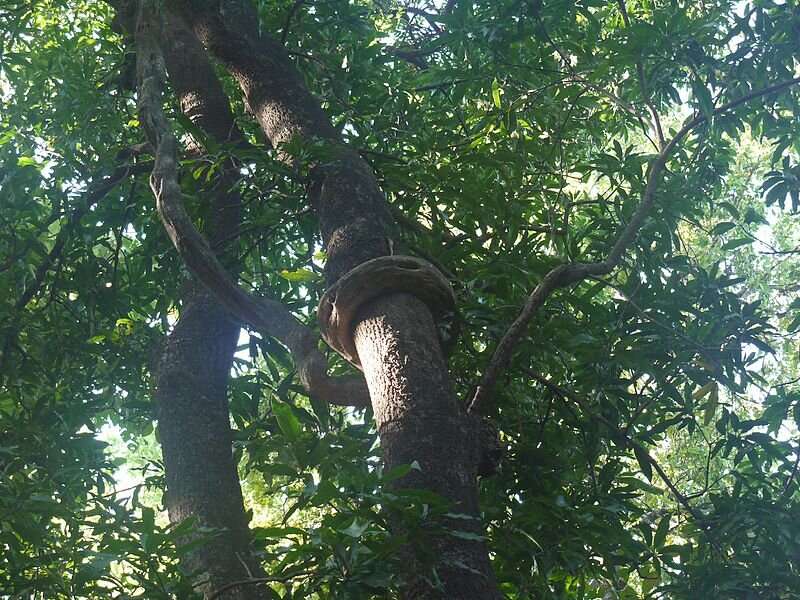Serpentine liana. Credit: Dinesh Valke/Wikimedia Commons, CC BY-SA 2.0
Lianas account for a small fraction of forest biomass, but contribute significantly to the dynamics of tropical and subtropical forests. However, our understanding of their contribution to food webs and biochemical cycling remains limited.
In a study published in Journal of Ecology, researchers from the Xishuangbanna Tropical Botanical Garden (XTBG) of the Chinese Academy of Sciences investigated the decomposition of liana and tree litter at community level across three forest types (limestone forest, evergreen broadleaved forest, and tropical seasonal forest) in Xishuangbanna.
Using mixed species bags as well as single species bags, the researchers collected community-level data of 40 species (20 lianas and 20 trees) to get a comprehensive understanding of liana and tree litter decomposition.
To distinguish mesofaunal and microfaunal effects, the researchers incubated the litter in bags with coarse and fine mesh. They then used single-species litter bags to compare decomposition rates of lianas and trees, and tested which functional traits best explained decomposition, and whether those traits differed between lianas and trees and among forest types.
Afterward, they tested whether liana litter enhances decomposition in litter mixtures by using mixed-species litter bags, and evaluated how leaf litter nutrients decayed in relation to litter mass.
They found that liana decayed faster than tree litter in single species bags with mesofauna access and in mixed bags (liana-only mix, tree-only mix) without mesofauna. Even though mesofauna generally accelerated the decomposition process, it did not change the pattern that already existed in bags excluding mesofauna (i.e., no interaction growth form/mesh size).
Moreover, lianas had higher nitrogen content and specific leaf area and lower leaf dry matter content and toughness than trees. Decomposition rate was significantly negatively related to lower leaf dry matter content. Litter of evergreen broadleaved forest decomposed more slowly than that of other forest types. Liana litter released calcium slightly faster than trees.
"Our study sheds light on the potential role of lianas within brown food webs and their importance on terrestrial biogeochemistry," said Mareike Roeder of XTBG.
More information: Mareike Roeder et al, Liana litter decomposes faster than tree litter in a multispecies and multisite experiment, Journal of Ecology (2022). DOI: 10.1111/1365-2745.13960
Journal information: Journal of Ecology
Provided by Chinese Academy of Sciences























